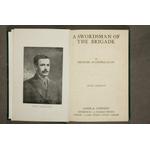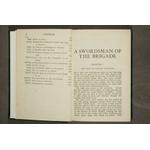The Executed
Michael O’Hanrahan
Michael O’Hanrahan (1877-1916) was born in New Ross, Co. Wexford, the son of Richard O’Hanrahan and Mary Williams; Richard, a cork cutter was said to have taken part in the 1867 Fenian rising. The family moved to Carlow where Michael was educated at Carlow Christian Brothers’ School and Carlow College Academy. When he had completed his education he worked in various employments including a stint with his father in the cork business. He joined the Gaelic League in 1898; the following year he established a branch in Carlow of which he became secretary. As an extension to his Gaelic League activities he taught Irish at the Catholic Institute. From around that time he tended to use the Irish form of his name—Micheál Ó hAnnracháin.
By 1903 he had moved to Dublin where he worked as a proof-reader for Cló Cumann which produced Gaelic League publications. He worked concurrently as a freelance journalist for various nationalist newspapers, including Sinn Féin and the Irish Volunteer, under the by-lines ‘Art’ and ‘Irish Reader’. He also wrote two historical novels of some literary merit: A Swordsman of the Brigade (1914) and When the Norman Came (1918), the former in particular being extremely evocative of its period. Meanwhile, he was an active member of the Gaelic League, serving as an energetic member of various committees and giving Irish classes and occasional lectures.
Politically aware from his early youth, O’Hanrahan became involved in some of the more radical nationalist campaigns of the day: for instance, in 1903 he joined Maud Gonne and Arthur Griffith in opposing the visit of King Edward VII to Ireland. Impressed with Griffith’s ideas on economic self-sufficiency and his proposal for the withdrawal of nationalist MPs from Westminster, O’Hanrahan joined Sinn Féin. He was also sworn into the Irish Republican Brotherhood. He joined the Irish Volunteers on their formation in November 1913, later being employed as an administrator on the headquarters staff at 2 Dawson Street. He became quartermaster- general of the 2nd Battalion of which Thomas MacDonagh was commandant. He and MacDonagh enjoyed a close friendship arising from their shared interest in writing and literature.
In the Rising, O’Hanrahan served in Jacob’s biscuit factory where he was third in command under MacDonagh and Major John MacBride. He was taken into custody following the surrender of the Jacob’s garrison on Sunday, 30 April. He was tried by court-martial and executed on 4 May. His brother Henry, who was with him in Jacob’s, was likewise sentenced to death, but his sentence was commuted to life imprisonment.









